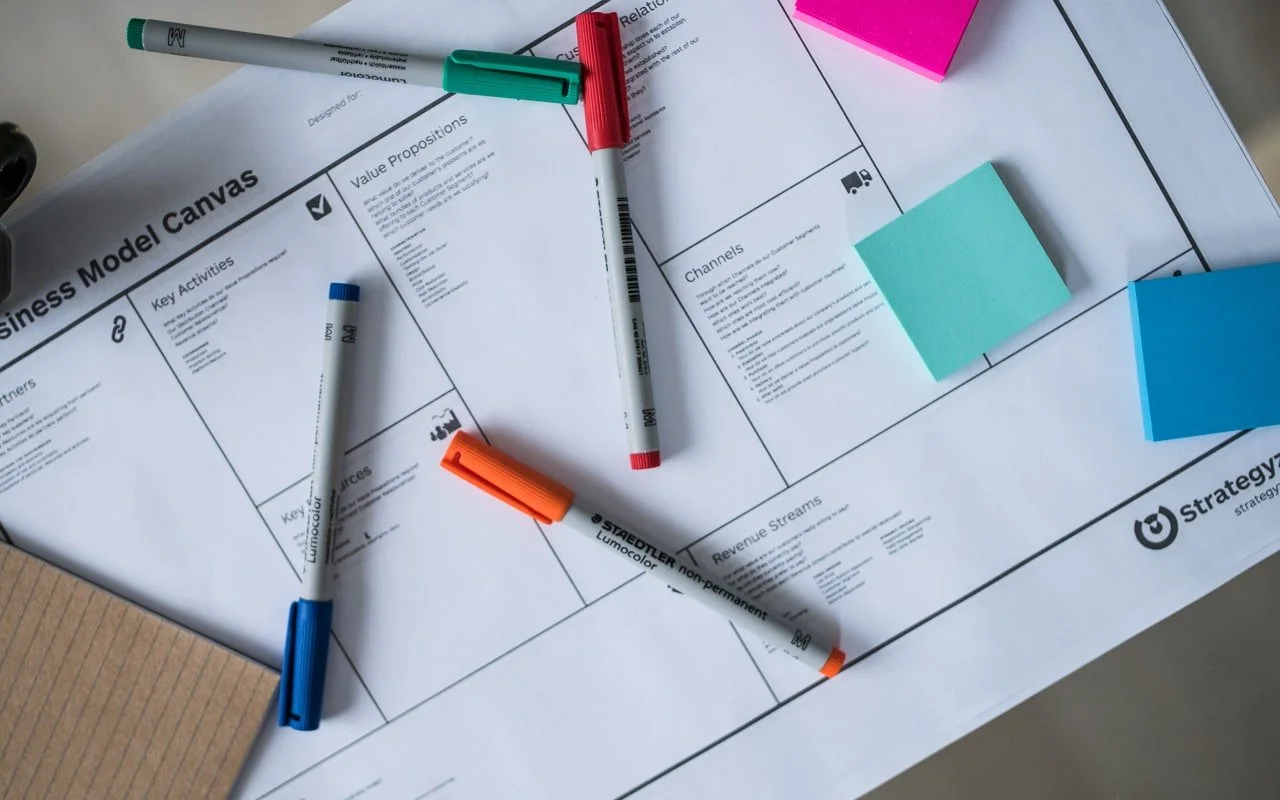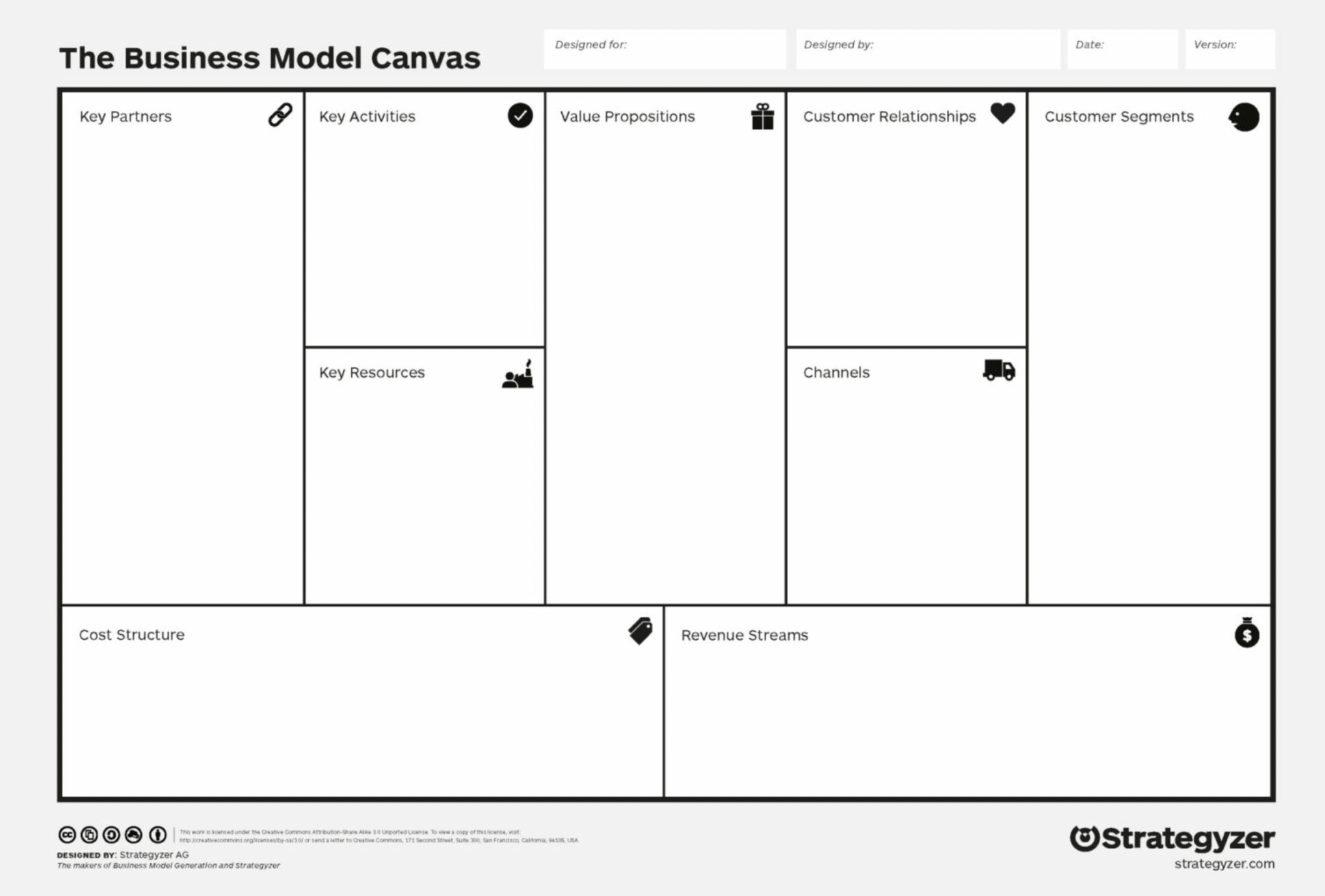Business Model Workshops
Use some of the world’s best strategy and design
tools to create a business you’re genuinely proud of.
Let’s get everyone on the same page, to map out today’s
business and what it could become in the future…

For your business to succeed, you need to have three things:
Desirability – Customers who love what you offer and tell their friends about you
Feasibility – A talented team, valuable assets, strong systems and partnerships
Viability – Consistently making more money than you spend
Two out of three won’t be enough.
If your brand isn’t seen as desirable, you’ll struggle to entice customers or get them to return.
If your business isn’t feasible for your team to run, you’ll either burn out or get crushed by competition.
If your business isn’t viable, you’ll run out of money and shut your doors.
Most founders are good at one of these aspects, maybe even two.
But to nail down all three takes deliberate planning, creativity and insight.
That’s why we need simple, powerful tools to help our thinking and get on the same page as the rest of our team.
That’s where the Business Model Canvas comes in.
A Business Model Canvas is like a one-page business plan – describing how all the parts of your operation fit together for success.
Business plans have a place, but they’re terrible for innovation and clarity.
You write 70 pages of fiction, and then hesitate to change your mind when better options emerge because the report is too arduous to update.
Canvases however, are elegant, straightforward, and only take 45 minutes to fill in properly.
But they’re deceptively simple; canvases make you face hard questions, and help you spot opportunities that were previously invisible.
A canvas is made up of nine boxes, arranged to describe those three crucial elements: Desirability, Feasibility and Viability.
It helps you identify your best customers and why they prefer to shop with you.
We can see how we meet people and treat people, tapping into deep pools of good customers, at the right time with the right messages.
We can summarise the systems and assets that make you strong, and the suppliers/allies who specialise in the things you don’t.
We gain clarity on the numbers too – learning about potential revenue streams and breakeven points.
And because they’re hyper clear, we can create multiple versions to describe future scenarios:
What if we targeted a new market?
What if we changed our pricing strategy?
What if we outsourced everything except our greatest strength?
What if we created a new set of products and services?
What if we expanded into a new country?
What if we made the most of the latest technology?
Because they’re easy to fill in, update and share, we can quickly experiment with “What If?” scenarios and design clever tests.
Writing something on a canvas won’t magically make it true, but it gives us something specific and concrete to go and validate.
And really, that’s the aim of any strategy work – to form hypotheses that we can test, going from idea to action while the price of failure is so low.
If there’s an issue with our model, we want to found out right now, while issues are cheap to fix and before we’ve committed most of our funds to the venture.
Using The Canvas With Your Business
The Business Model Canvas is used by all sorts of companies, teams, boards, and innovators, helping them describe their ideas and get in alignment with their teammates.
It’s a cliché for a reason – because it works.
Specific benefits include:
Giving your team a shared language for describing what you do, who you’re serving, how you make a margin and how you intend to grow
Developing deeper insights into your customers, what they care about, where they congregate and how they make purchase decisions
Identifying, improving and defending valuable assets that give you a competitive advantage over your rivals
Gaining “X-Ray Vision” into your financials, so that you know where your money gets spent, and which of your products and services make a margin (or a loss)
Most importantly, the experience is genuinely engaging – many participants are surprised at how much they look forward to each part of the process.
Our work draws on the best parts of Design Thinking and Lean methodologies, without losing focus or alienating anyone through jargon.
You’ll learn from a wide range of real-world examples, while also focusing on your own industry and market.
Why Work With Evander Strategy?
We’ve taught this process to over 1,000 founders and businesses, with tremendous results:
Substantial growth in both revenue and margin across existing business units
Rapid development of new business units, including running tests and developing prototypes
The confidence to say “no” to underperforming business units and experiments that don’t look promising
The creation of new companies, brands or customer segments, either starting from scratch or as a big “pivot”
Strong participation from your whole team, giving everyone the chance to contribute and stay engaged throughout the process
Experienced facilitators who have worked with teams all over the world, in a wide range of cultural contexts and settings
An average participant feedback score of 9.1 out of 10
Our role is to be midwives for your ideas – you’re still doing the work, but the process is much smoother with a safe pair of hands.
By working with facilitators, you will be freed up to be a full participant in the conversation, not having to think about the agenda or taking frantic notes.
Your team gets the best out of your insights, without you needing to create case studies or answering everyone’s tricky questions.
When you’re ready to get started, we can set up a series of workshops that suit your team, your timeline and your budget.
These may be online or in person, and we can adjust timings to suit your team’s work styles.
Some teams prefer full or half day workshops, others prefer a series of shorter weekly sessions with time to make progress in between.
Some also like to have 1-1 coaching sessions as well, to work through details and ask as many questions as they like.





